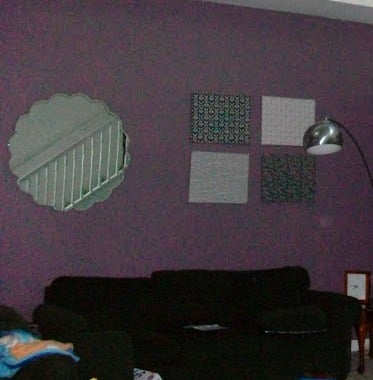Purple Color Psychology

What is the first thing you think of when you hear the word "purple"?
Purple is Mysterious
The color of mystery, spirituality, and harmony with one's surroundings and self, when overused purple can also be considered artificial and contrived, since the closest natural pigment, indigo, is not easily found in nature.
In 2008, Pantone decreed the color of the year as Blue Iris, a wonderfully balanced purple and blue. It combines the pacific stability of blue with the inscrutability and transcendental qualities of purple.
Said Leatrice Eiseman, executive director of the Pantone Color Institute at the end of 2007, "As a reflection of the times, Blue Iris brings together the dependable aspect of blue, underscored by a strong, soul-searching purple cast. Emotionally, it is anchoring and meditative with a touch of magic."
Modern American Color Associations
Color
| General Appearance
| Mental Associations
| Direct Associations
| Objective Impressions
| Subjective Impressions
|
|---|---|---|---|---|---|
Purple
| Deep, soft, atmospheric
| Cool, mist, darkness, shadow
| Mourning, Easter
| Dignified, pompous, mournful, mystic
| Loneliness, desperation
|


The Color of Royalty
But there's more to purple than being the color of drapes in shops selling spiritual items! Purple has been considered the color of royalty and wealth for centuries (especially the more costly, darker shades), while also stimulating the brain in its problem solving abilities.
In marketing, many companies use purple artfully to continue with the mysterious aspect of the color, but when used in its lighter tones such as lavender, tends toward association with springtime, romance, and youth especially when combined with white, traditionally the color of purity.
Treating Disease with Purple
Practitioners of Ayurvedic chromatherapy (color in healing), believe that purple has certain effects that assist in cures. They believe:
- Purple has analgesic (painkilling), anti-pyretic (cooling), narcotic, and hypnotic properties
- It is the color of anger, divinity, and royalty
- Purple is a venous stimulant
- The color may be used to assist in energizing someone without making their condition worse (i.e. if they suffer from kidney, lung, or stomach ailments)


Decorating with Purple
There are so many ways to use purple in your home, without it appearing like a yoga studio, an old-fashioned receiving hall, or an overdone powder room.
Here are some suggestions:
Add a cozy purplish area rug to your entry hall -- it will make your guests feel welcome and the dark color will conceal any dirt from their footwear.
Paint the bathroom in lilac, lavender, or mauve. Lighter purple tones are soothing and if you desire to take a bath, why not be surrounded by a gentle color?
Pair purple with a bright white or fresh golden yellow for a sharp look; if you desire something more traditional, try medium browns or tan tones instead.
In the bedroom, a purple sheet set will make you feel like a million bucks.
When all else fails, a plant with purple blooms or freshly cut flowers always help to spruce a place up.
You might be surprised at how well purple can fit into your home!

Facts About Purple
- The ancient remedy of using the purple dye extracted from murex shells to stop the overgrowth of granulation tissue was the earliest use of calcium oxide to assist in medical use. Today, that compound is used as "Dakin's solution".
- Turtles have well-developed vision, and the most important hues for them include violet.
- Violet has the most subduing influence, with standard purple following.
- Purple has been associated with tragedy.
- In an abstract form, purple is soft and flowing, and suggests the form of an oval.
- In ancient heraldry, purple stands for royalty or rank.
- Purple vestments worn by Roman Catholic clergy symbolizes affliction and melancholy.
Resources
Amber, Reuben, Color Therapy. Aurora Press, New York, 1983.
Birren, Faber,Color Psychology and Color Therapy. Citadel Publishing, New York, 1950
http://www.pantone.com/pages/pantone/pantone.aspx?pg=20540&ca=10
http://printmediacentr.com/2011/02/infographic-the-psychology-of-color-for-web-design/








